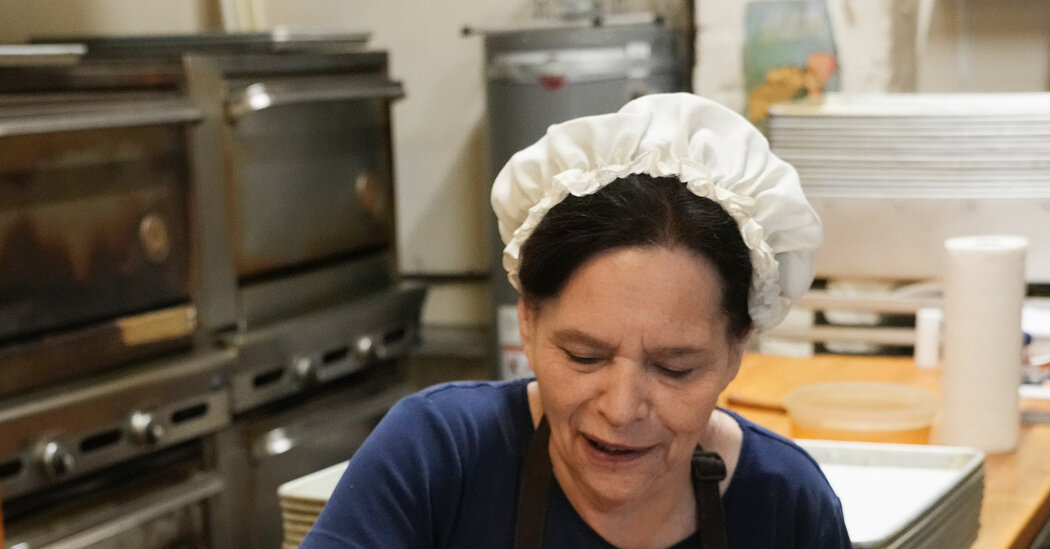In a charming former mining town in the Sierra Nevada foothills, you can taste pieces of California history dating back nearly 175 years.
Their crusts are buttery and flaky, with steaming layers of meat and vegetables inside. These are pasties, crescent-shaped hand pies that originated as a lunch food for miners in Cornwall, England, and have become a mainstay in Grass Valley, 60 miles northeast of Sacramento.
The pasty — pronounced “pass-tee,” rhyming with “nasty” — arrived in California with Cornish workers who began emigrating to the gold fields in the 1850s to toil in the rich mines near Grass Valley, like the Empire mine. By the end of the century, three-quarters of Grass Valley residents were of Cornish descent.
Though that’s no longer the case (and the last of the mines closed decades ago), their Cornish traditions live on.
Grass Valley, which is home to roughly 14,000 people, hosts an annual festival for St. Piran, the patron saint of Cornwall, and celebrates Christmas with Cornish carols and folk tunes written long ago by homesick miners. And, of course, the town still cherishes and serves up the pasty.
“It’s our heritage food,” said Gage McKinney, a local historian who is descended from some of the earliest Cornish immigrants to Grass Valley. “You bite into a pasty, it connects you with all this legacy, which is only vague in your mind, but becomes visceral in your mouth. Any place where the Cornish heavily settled, you can find a good pasty.”
The pasty spread all over the world in the 1800s with the Cornish, who were in high demand for their hard-rock mining know-how: Cornwall, in the southwestern tip of Britain, had been mining for tin and other metals since pre-Roman times. Pasties are now a favorite food in the Upper Peninsula of Michigan, where copper mines attracted Cornish workers, and in Mineral Point, Wis., where zinc and lead mines were a draw. In the former silver mining town of Real del Monte in central Mexico, pasties caught on so well that there is now an annual pasty festival and a pasty museum.
In Grass Valley, there’s no record of a pasty shop being in business before the 1900s, most likely because families were baking them at home, Comstock’s Magazine reported. “But after the last mines closed in the 1960s,” the magazine said, “Grass Valley began to capitalize on its mining history instead of its minerals.”
Two shops in Grass Valley specialize in the pasties today: Marshall’s Pasties, which has been cooking the savory turnovers since 1968, and Grass Valley Pasty Co., which opened in 2019. The trendy Corvus Bakery in town sells gluten-free hand pies, and the neighborhood church bakes more than 1,000 pasties once a month as a fund-raiser.
Though local shops make all kinds of flavor variations now, the traditional Cornish recipe calls for diced skirt steak, potato, onion and rutabaga. In the old days, McKinney told me, miners’ wives would sometimes bake a sweet filling like apples into one end, so miners could finish their meal with a little dessert.
In the mines, Cornish men, known as Cousin Jacks, would light a candle and use it to heat a lunch pail with two compartments: Tea in the bottom compartment would steam the portable pie on top. The pasty’s crimped crust served as a handle that miners would discard after eating, to avoid consuming any arsenic or other metals that may have been on their fingers.
“They had this full meal in a crust that they could take underground,” said McKinney, a fifth-generation Grass Valley resident. “The Cornish pasty was very much part of the wherewithal of this industrial work force that brought industrialization to pristine places like the foothills.”
As I was waiting to buy lunch recently at Grass Valley Pasty Co., where you can watch cooks shape dough into half-moons, an older man in line ahead of me told the cashier that his grandfather had worked in a mine in nearby Amador County. He said his family had its own passed-down pasty recipe, but it was easier to pick some up from the shop.
After surveying the options, he decided that the closest flavor to what his family made was the Cousin Jack, stuffed with skirt steak, potatoes, onion and parsley. He left clutching a paper bag with two warm pasties inside.
And before you go, some good news
Elementary school students in Santa Cruz were playing by a creek near their school last spring when they noticed what looked like a bone on the ground.
It turned out to be ancient — a fossilized arm bone of an immense prehistoric sloth that probably weighed around 2,000 pounds. Now the children’s lucky discovery is on display for all to see at the Santa Cruz Museum of Natural History, NPR reports.
Thanks for reading. I’ll be back tomorrow. — Soumya
P.S. Here’s today’s Mini Crossword.
Maia Coleman and Briana Scalia contributed to California Today. You can reach the team at CAtoday@nytimes.com.
Sign up here to get this newsletter in your inbox.

